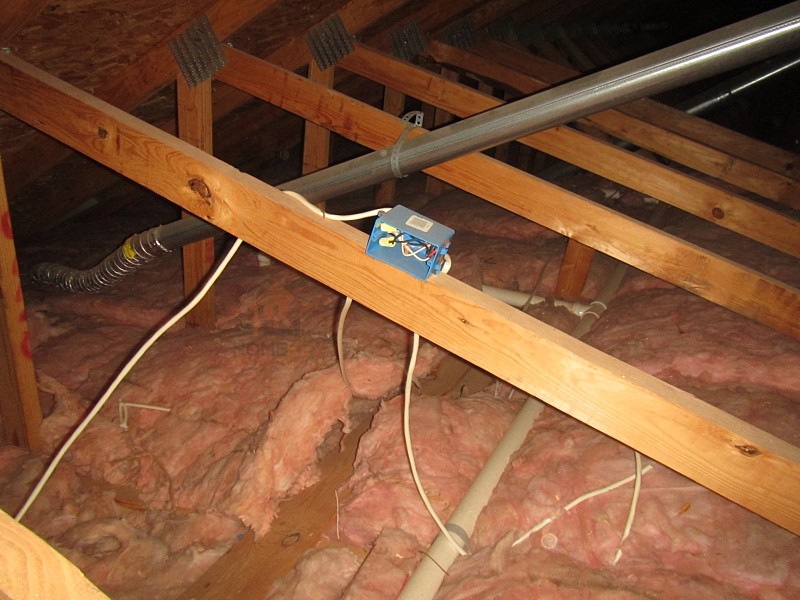Understanding Electrical System Inspections: Key Areas to Check for Home Safety

When buying a home, the electrical system is one of the most critical components to evaluate. Faulty wiring or outdated systems can pose serious safety hazards, including fire risks and electrical shock. At HomeKey Inspections, our certified inspectors adhere to the ASHI Standards of Practice, thoroughly assessing every aspect of a home’s electrical system to ensure safety and functionality. Here’s what we look for during an electrical system inspection, with particular focus on areas relevant to homes in Virginia and Maryland.
1. Electrical Panels and Subpanels
- Correct Wiring and Connections: Inspectors check for proper wiring and connections within the panel, ensuring there are no loose or improperly secured wires that could cause arcing or overheating.
- Signs of Overheating or Fire Hazards: Scorch marks, melted insulation, or burned components are red flags that require immediate attention.
- Double Taps: A common issue in panels, double tapping occurs when two wires are connected to a breaker designed for one, creating a potential fire hazard.
- Unsafe Panel Brands: Panels like those manufactured by Federal Pacific Electric (FPE) or Zinsco have a history of safety issues and are flagged for replacement.
- Installation Quality: Subpar installations, such as panels set too far into the wall, open junction boxes, missing knockouts inside the panel, missing wire clamps / strain relief, incorrect labeling, can indicate underlying problems.


Note: The two images above are from separate electrical panels.
2. Ground Fault Circuit Interrupters (GFCIs) and Arc Fault Circuit Interrupters (AFCIs)
- GFCI Protection: These devices are essential in areas with water exposure, like kitchens, bathrooms, and outdoor outlets, as they prevent electrical shocks. Homes built or updated to modern codes should have GFCI outlets installed where required.
- AFCI Protection: AFCIs, now required in many areas of new construction, provide protection against electrical fires caused by arcing faults, commonly found in bedroom circuits.
3. Light Switches and Fixtures
- Operation and Safety: Inspectors test switches to ensure they function correctly and check light fixtures for secure installation. This could include clearance issues (e.g. light fixtures installed too close to a tub or shower).
- Wiring: Exposed or frayed wires near light fixtures or switches are inspected and noted as safety concerns.

4. Receptacles and Grounding
- Proper Grounding: Outlets are tested to verify that they are properly grounded, an essential safety feature that prevents electrical shock.
- Polarity and Functionality: Inspectors use specialized testers to ensure outlets are wired correctly and functioning as intended.
- Aging Components: Older homes often have outdated outlets, such as two-prong receptacles, which lack grounding and should be upgraded.
5. Shut-Offs and Safety Features
- Main Electrical Shut-Off: Inspectors verify the presence of a clearly labeled and accessible main shut-off switch(es), a critical feature for emergency situations.
- Circuit Breakers vs. Fuses: While fuses were common in older homes, circuit breakers are the modern standard and provide more reliable protection. Homes with fuses are flagged as potentially outdated.

6. Exposed Wiring and Cover Plates
- No Exposed Wires: Exposed wiring is a significant safety hazard. Inspectors check for missing cover plates or improperly terminated wires in junction boxes.
- Protection in Vulnerable Areas: Wiring in spaces like basements, attics, or garages is inspected to ensure it is adequately shielded from physical damage, such as from stored items, pests, or incidental contact.

7. Clearances and Safety
- Overhead Service Drops: Power lines should maintain proper clearance from roofs, windows, and walkways. Improperly installed or sagging service drops are noted as safety concerns.
- Panel Accessibility: Electrical panels must have adequate clearance for safe access. Blocked or hard-to-reach panels are noted in the inspection report.

8. Outdated or Aging Systems
- Knob-and-Tube Wiring: While uncommon, some older homes in Northern Virginia and Maryland may still have knob-and-tube wiring, which is outdated and can present fire risks.
- Fuse Boxes: As mentioned, homes with fuse boxes instead of circuit breakers are flagged as requiring updates to meet modern safety standards.
Why Electrical Inspections Matter
Electrical systems are not only complex but also essential for a home’s safety and functionality. An inspection can uncover hidden issues, such as improperly grounded outlets or potential fire hazards, that may not be visible during a walkthrough. This is particularly important for older homes, where outdated systems might not comply with current codes, and for new construction, where rushed installations can lead to oversights.
At HomeKey Inspections, we prioritize safety and peace of mind, ensuring that every aspect of a home’s electrical system is thoroughly evaluated. Whether you’re purchasing a condo in Washington D.C., a historic home in Alexandria, a newly constructed property in Loudoun County, or anything in between, our inspectors are here to help you make informed decisions.
Ready to book your home inspection? Schedule a HomeKey inspection online, or contact us today to schedule an appointment and take the first step toward ensuring your home’s safety.

